Our pioneering land remediation system
Sea-Chem's unique products help to regenerate brownfield sites by accelerating the natural decomposition of hydrocarbon pollutants - such as oil and gas - within contaminated soils, a process known as bioremediation. Cost-effective and totally sustainable, our soil treatments have quickly become established as leaders within the brownfield industry.
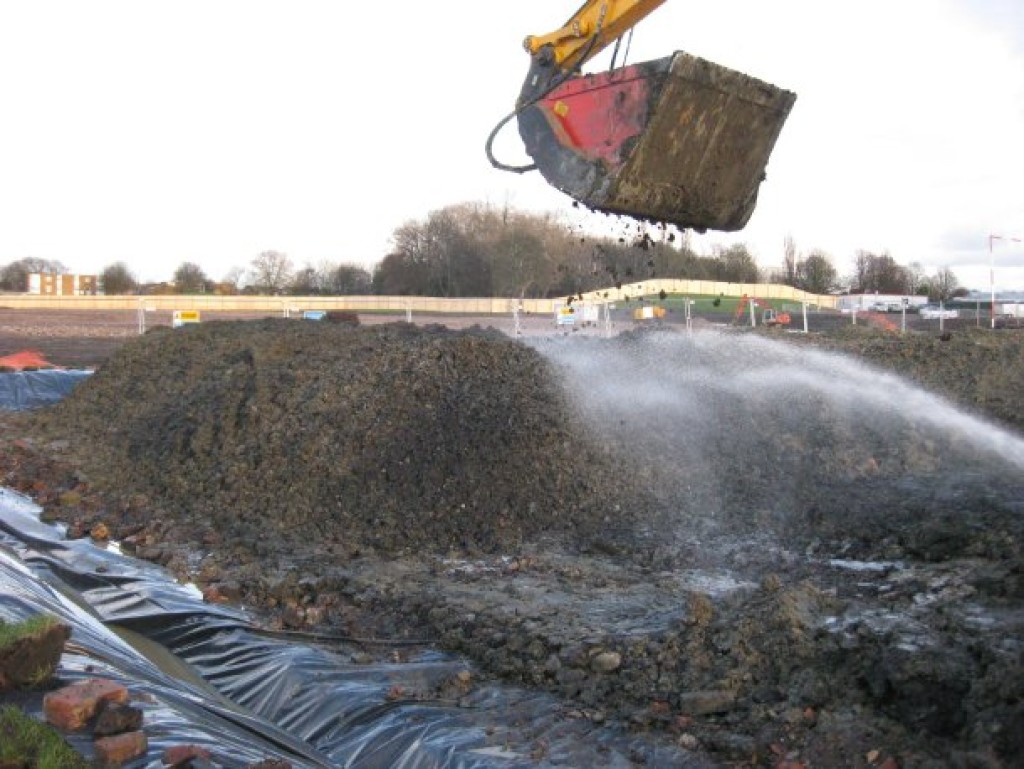
Products
Sea Power 101: Biostimulant and Biosurfactant
Sea Power 101 is a liquid reagent derived from a unique mixture of seaweed and plant extracts. It's purpose is to speed up the natural digestion of hydrocarbon pollutants - such as oil, petrol and gas - by soil bacteria, a process known as bioremediation. In doing so, it effectively works as two treatments in one.
-
Biostimulation: Sea Power 101 is full of nutrients that bacteria love. These essential elements stimulate the metabolic processes of soil micro-organisms and catalyse their defences, allowing them to operate more effectively in toxic environments.
- Bioavailability: Seaweed extracts within Sea Power 101 contain a wealth of active compounds called surfactants - or 'wetting agents' - which emulsify hydrocarbon pollutants within soil, increasing their bioavailability - that is, the ease with which the bacteria can bind to them and digest them.
The combined result: Sea Power 101 helps to accelerate the natural degradation of pollutants by stimulating the metabolism of soil microbes and improving the availability of their food source.
BioBoost: Completing Our Synergistic System
Sea Power 101 was a fantastic innovation for contaminated soil remediation; but we wanted to develop a system that would truly revolutionize the process. We therefore introduced a crucial third principle into our treatment.
- Bioaugmentation: The addition of billions of new bacteria spores to a contaminated site with a view to improving the extent and speed of bioremediation.
BioBoost - our specially developed bacteria additive - is mixed with Sea Power 101 as part of the Synergistic System. It's an approach that overcomes the traditional limitation of bacterial augments: namely, the fact that 98% of new microbes perish within the first 24 hours because they are starved of the conditions required to sustain them. Sea Power 101, crammed full of nutrients, gives the new microbes everything they need to survive until they reach their food source: the hydrocarbon contaminants within the soil.
As for the BioBoost formula itself, it contains 11 species of specially chosen bacteria, including eight lines of bacillus (for low-end, 'light' hydrocarbons); two varieties of pseudomonas (for 'heavy' hydrocarbons, such as PAHs and BTEX); and an anthrobacter (for type -(a)styrene). All species employ positive chemotaxis, a mechanism that allows them to hone in on the areas of worst contamination.
Summary
In a nutshell, our Synergistic System is a threefold solution for the bioremediation of hydrocarbon laden soils, employing the principles of biostimulation, bioavailability and bioaugmentation into one simple and hugely effective treatment. Clients who utilise our products are able to treat more contaminated sites than has previously been possible - including those containing PAHs and BTEX - and do so within shorter time periods.
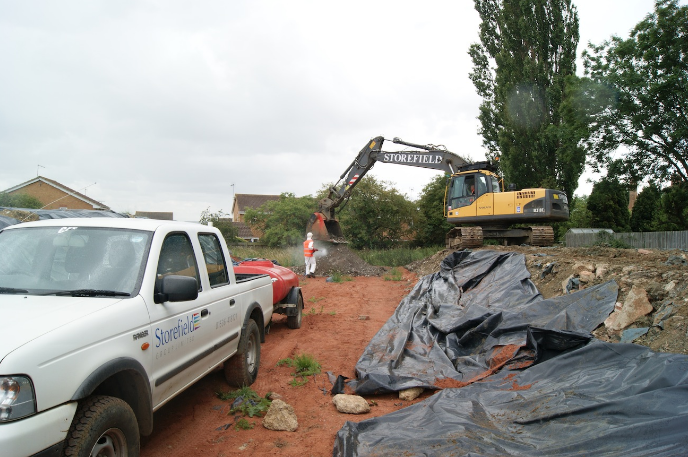
Technical Information
We have put together the following guide to the practicalities of using the Synergistic System on contaminated soil projects. If you need any of these points elaborating on, contact us and we will gladly answer any questions.
Range of Contaminants
Our Synergistic System is effective against a wide range of hydrocarbon pollutants commonly found in soil, including:
- Aliphatic and aromatic compounds
- Fuel oils and crude oils
- Glycol and other solvents
- Certain halogenated compounds
- Alkanes up to C44H90
- Polycyclic aromatic hydrocarbons (PAHs)
Furthermore because of the special strains of pseudomonas and anthrobacter within BioBoost bacteria, the system will also now treat benzene, toluene, ethylbenzene and xylenes, the notoriously stubborn BTEX compounds.
Project Requirements
Sea-Chem will advise contractors on the volume of product required based on the nature of their project. However, as a guide, the follow should give some general idea of the volumes involved.
- Sea Power 101: 2L per cubic metre of soil to be treated
- BioBoost: 50g-150g (1 billion cfu/g) per cubic metre, depending upon the nature of the contaminants in the soil and the project's deadline
Application Methods
Our Synergistic System involves a single application of a pre-mixed solution of Sea Power 101. A typical application process is described below.
- Sea Power 101 is mixed at rate of 1:9 with cold water within an empty IBC, which when finished will treat 50 cubic metres of contaminated soil
- The prescribed quantity of BioBoost is then added, stirred and left to dwell for around an hour
- Contaminated soil is screened to remove rock and debris from the site
- Mixture of Sea Power 101 and BioBoost is then sprayed directly onto the screened material, with care taken to ensure even distribution (NB. most clients carry this out using a manual spray system, although some have developed techniques to utilise an automatic conveyor to improve efficiency)
- Treated soil is then placed into large windrows around 1m in height and left to attenuate naturally
- Some clients turn these windrows occassionally, usually ever 4 weeks, to allow air in to further accelerate the process
- Soil is tested and when considered safe either safely disposed of or backfilled
Please note that whilst the above description applies to a typical application of our Synergistic System, the products themselves are also compatible with almost all existing remediation methods and technologies, including direct surface application; in-situ injection (in sandy soils); and in-situ/ex-situ soil washing. Contact us for more details.
Financial Benefits
The Synergistic System allows bioremediation jobs to be carried out much more quickly than has previously been possible, which means that there are potentially huge operational savings to be had. Furthermore, using our products, full remediation and reuse of hazardous soil can be achieved for a fraction of the cost of diverting it to landfill. On very large jobs this saving can run into hundreds of thousands of pounds.
Environmental and Operational Benefits
Compared to remediation technologies that utilise hazardous chemicals, such as hydrogen peroxide, Sea-Chem's products are entirely free of warning stickers. They are neither toxic nor flammable, which means there are many health and safety (as well as financial) benefits to storing and handling these on a project site. Furthermore, as the products are totally biodegradable and sustainably harvested, they are currently the most environmentally responsible choice available to brownfield contractors.
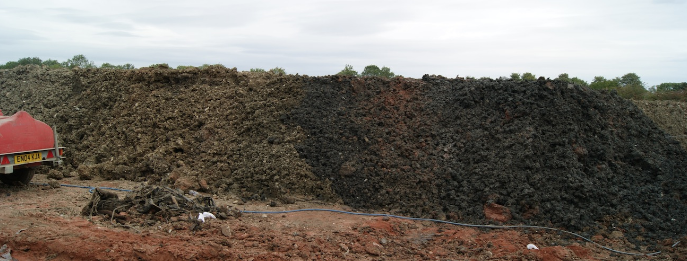
Case Studies
Darlaston, West Midlands
There had formerly been a gasometer on this site, which had contaminated 3000 cubes of soil with an average TPH of 6,500mg/kg and an average PAH of 400mg/kg. Sanctus, the contractor for the work, were looking for a way of treating the soil on site and avoiding any landfill costs. We suggested to them that they apply two litres of Sea Power 101, our unique seaweed-based media, with 100g of BioBoost, a dried blend of pseudomonas bacteria, along with 18 litres of water for every cubic metre to be treated. This solution was then sprayed directly into the soil following screening. After the treatment was applied, the soil was placed into windrows and left for a period of twelve weeks. During this time, each windrow was turned twice. After a period of twelve weeks, the soil had been successfully brought down to safe levels and could be backfilled and compacted. The site is now ready for use by the adjacent school, Grace Academy.
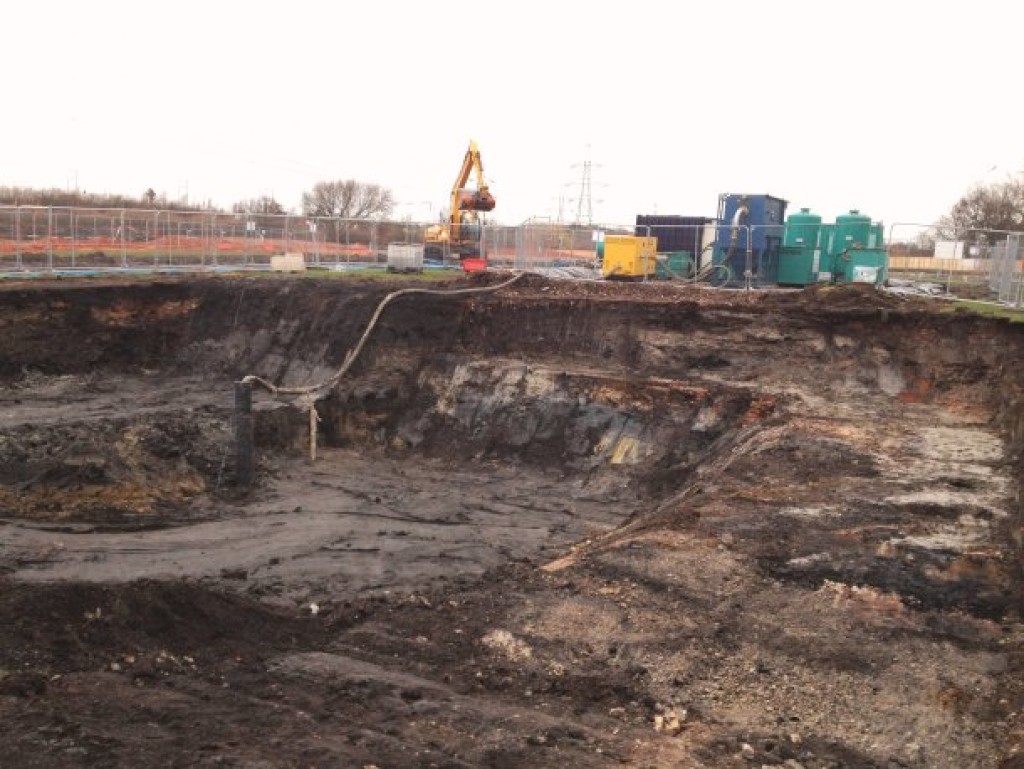
Chertsey, Surrey
Tamdown won ‘Best Use of a Single Remediation Technique’ at the 2008 Brownfield Briefing awards for their treatment of this former gasworks in Surrey. After applying Sea Power 101 during the screening process, Tamdown constructed vented biopiles housed in large poly-tunnels. Air was continually circulated through the piles using a low vacuum extraction system, preventing the need for mechanical turning. Prior to the bioremediation, the site’s mean average contamination levels were 2,410mg/kg TPH and 1,100mg/kg PAH. Following treatment with Sea Power 101 over a period of ten weeks, these levels fell to just 394mg/kg TPH and 218mg/kg PAH respectively, representing a 90% reduction in overall pollution levels. Brownfield Briefing concluded that this was an achievement unlikely to be possible during the winter months by any other bioremediation method. Eliminating the need for the transportation and disposal of 200 lorry loads of hazardous waste to landfill and the importation of the necessary backfill, Tamdown’s bioremediation and re-use of 3,250 tonnes of soil resulted in a saving of £195,000, which equates to more than 50% of the total contract sum. For more information on this case study, please visit the Tamdown and Brownfield Briefing websites.
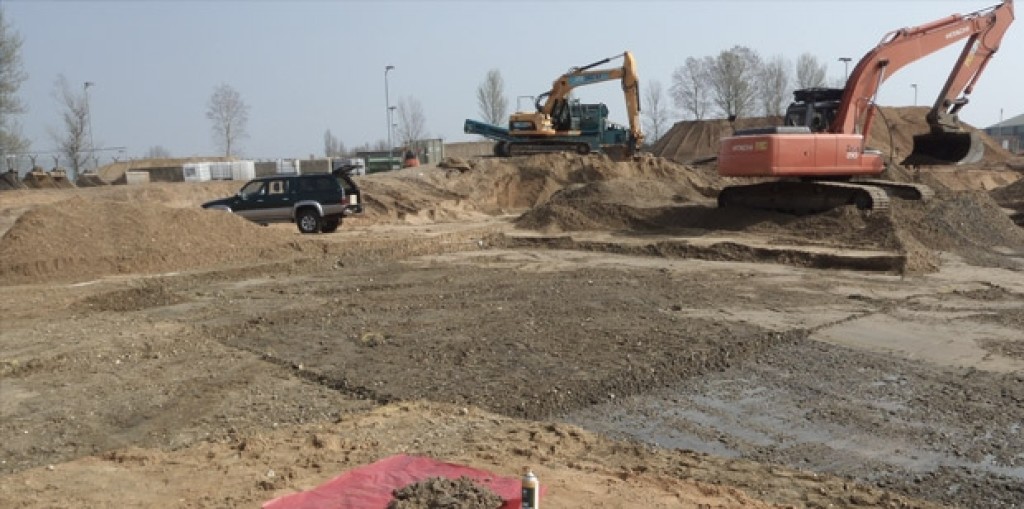
West Thurrock, Essex
Sea Power 101 was again able to prove its efficacy when it was utilized on a former industrial site in West Thurrock, Essex, under some extremely challenging conditions. Formerly a scrapyard, the contaminated site was heavily laden with diesel and other fuels. Prior to treatment the TPH of the soil ranged between 8,000mg/kg and 10,000mg/kg. Bioremediation took place between November and December 2010, when the weather in the southeast of England was extremely cold. Soil from the site was mechanically screened and then sprayed directly with Sea Power 101. It was then constructed into vented biopiles and left for a period of eight weeks. Soil samples were taken after the treatment period, and showed a new average TPH level of 775mg/kg, which represented a reduction in overall human-health contamination of 91.4%. The site also passed the stringent leachate targets for the soil of 930μg/l TPH. From seven leachate samples, the average contamination after eight weeks of treatment was 223μg/l, less than 25% of what was required. Given the exceptionally low temperatures during this period, our client had concerns about the level of microbial activity that could be expected at the site and about the effect that this might have on the speed and extent of the bioremediation. However, the results proved that even under these extremely testing conditions, Sea Power 101 dramatically enhanced the natural degradation process at the site. View full results data for the West Thurrock project.
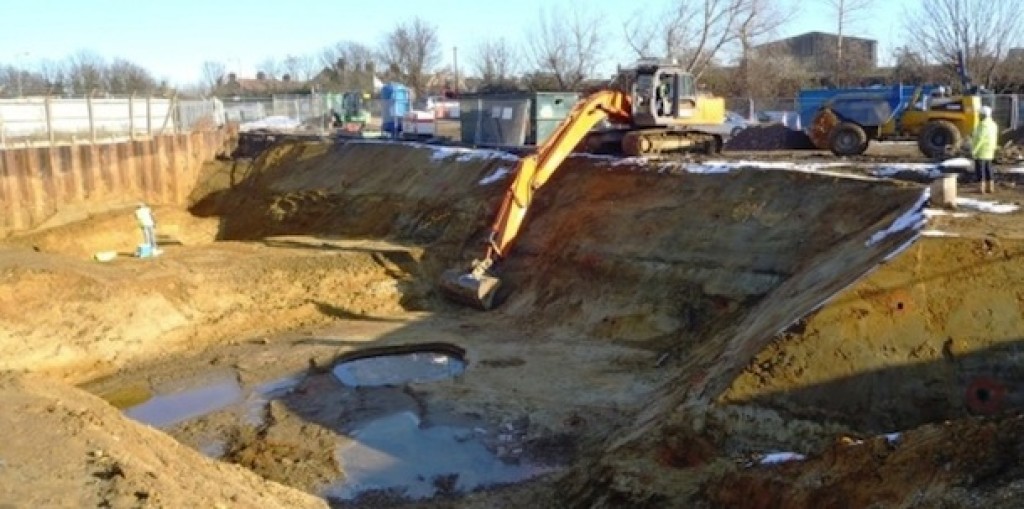
Russian Air Base, Werneuchen, Eastern Germany
Land underneath this site had become contaminated over a long period of time by a mixture of lubricant oils, hydraulic fluids and aviation fuel. Following excavation, the soil applied with Sea Power 101 and formed into biopiles. The vast majority of hydrocarbons were removed in the first 30 days, and the site was fully remediated within four months.
Tar Works, County Durham
Heavy oils and other toxic materials had been contaminated an area of 20,000m2 at this old industrial site. Soil was excavated, treated with Sea Power 101 and placed on windrows to accelerate the bioremediation process. The whole facility was successfully remediated after four months of treatment.
Private Property, Inverness
Following the failure of a domestic heating system, kerosene fuel had contaminated the ground underneath two private houses, producing a noxious atmosphere in one of them. Sea Power 101 was injected into the earth, along with oxygen, in a conventional in-situ process. The site was fully remediated with minimum disturbance to the residents.
Farmland, Avonbridge, Near Bristol
Failure of a valve on a brand new tanker carrying waste oils and diesel led to significant hydrocarbon leakage on this arable land. A very large excavation was carried out, and contaminated soil was placed in windrows and treated with Sea Power 101. Full remediation of the land was possible in six months.
Tar Factory, Rositz, Germany
This site had been producing tar for over 100 hundred years before it was decommissioned in 1992. During the Second World War, the factory was bombed causing extensive soil pollution, which was left untreated until the 1990s. Sea Power 101 was used on the site and showed itself to be highly effective in reducing the overall hydrocarbon content of the soil and in particular the notoriously stubborn PAHs.
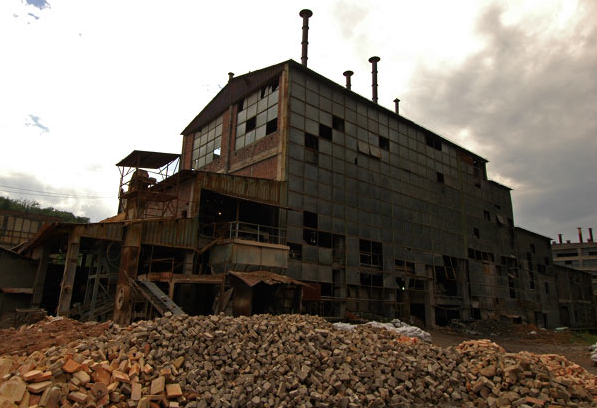
Product Development
Sea-Chem's Synergistic System for the remediation of contaminated soil is the result of over 10 years of product development and testing.
Phase 1: Sea Power 101
The Sea Power 101 story began in the late 1990s when the European Union launched an initiative to find greener products to assist in the clean-up of contaminated land. Seaweed – a plant used as a soil enhancer in coastal agriculture for millennia – was shortlisted for further investigation. In 2002, after several years of research and investigation, a coalition of leading scientists from across Europe arrived upon Sea Power 101. Designed to accelerate the natural bioremediation process by stimulating the metabolism of bacteria within the soil, this nutrient-rich media was derived from the Laminaria Digitata genus of seaweed, along with an array of additional plant extracts. Sea Power 101 was submitted for testing on a range of brownfield sites, each containing a different type and level of contamination. One of these sites, a former petrol station at Ercolano in Italy, was treated using an in-situ technique: in just seven days the product was able to reduce the TPH content of the site from 3200 mg/kg to 900 mg/kg. Independent assessors found that Sea Power 101's potency was two-fold: the solution contained surfactants that "made the hydrocarbons more bioavailable for the bacteria"; meanwhile the beneficial plant extracts "supplied the limited nutrients required by the bacteria to metabolise the hydrocarbons." They concluded that, following an application of Sea Power 101, "the soil bacteria became a potent microbial community for hydrocarbon degradation" within a matter of days.
Phase 2: BioBoost Bacteria
Sea-Chem acquired the formulae for Sea Power 101 in 2007. However, even armed with this amazing, proven product, we still felt there was considerable room for improvement. We wanted to create a comprehensive treatment system that would revolutionize the way bioremediation was carried out, both in terms of cost-effectiveness and reliablity. Given that the micronutrients within Sea Power 101 could bring dormant soil bacteria back to life, we wondered what the effect might be if we mixed billions of specially chosen microbes in with the seaweed prior to application. Previous attempts to remediate contaminated soil using 'bioaugmentation' were blighted by the fact that 98% of new bacteria died within the first twenty-four hours - Sea Power 101 offered a solution. Sea-Chem therefore set about developing a bacteria augment to be combined with Sea Power 101; and in 2008, BioBoost was born. Combining eleven different species of bacteria, each specially chosen for its ability to target and digest certain types of hydrocarbons, BioBoost is a fine, dry powder containing billions of individual colony-forming units. It also contains new strains of pseudomonas and anthrobacter bacteria, which are effective against BTEX, some of the most stubborn and deadly hydrocarbon compounds.
Phase 3: Our Synergistic System
BioBoost in itself is a massive improvement on existing bacteria products for soil regeneration; however, the effect of combining it with Sea Power 101, which both heightens the metabolism of the microbes and increases the bioavailability of hydrocarbon contaminants within soil has led to some quite astonishing results. Using our Synergistic System, bioremediation is a much more reliable and cost-effective solution than has previously been the case. Furthermore, it is now possible to chose bioremediation for sites with very high levels of contamination or for when projects have very tight deadlines.
